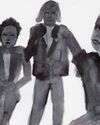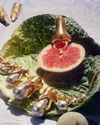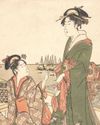Replete with gilded churches, the colonial city of Puebla is a world away from the country’s bustling capital.

OVER THE PAST couple of years, it seems, Americans have discovered the joys of Mexico City en masse. What they might not know — and what stylish locals long have — is that the city of Puebla, another design-and-food-rich destination, is just a two-and-a-half-hour drive southeast. With a population of 1.5 million, it too lies beneath misty mountains (including the still-puffing Popocatépetl volcano) and possesses a rich history.
The Aztecs ruled the region until the Spanish arrived in 1519. The latter’s architectural contributions are the city’s blocks of candy-coloured mansions and many churches, including the especially ornate Capilla del Rosario, with intricate carvings covered in 23-karat gold leaf. No doubt it helped make the town attractive to Napoleon III and his forces, whose defeat in the 1862 Battle of Puebla is commemorated by Cinco de Mayo.
The largest point of commonality, though, is that like the capital, Puebla is in the midst of a cultural renaissance. A new generation has taken up traditional crafts, offering fresh takes on tiled table sets and hand-embroidered clothing in a much less expensive setting. Since 2016, Puebla has seen the opening of the International Museum of the Baroque, set in a curvilinear concrete building designed by Toyo Ito, and a dozen or so hotels and restaurants, almost all of which serve Puebla’s culinary claim to fame — mole poblano, a thick, earthy-sweet sauce of chiles, herbs and chocolate thought to have been invented by a group of 17th-century nuns. Some batches simmer for nearly three days, and the ingredients vary greatly from kitchen to kitchen. It’s the particular mix that lends each one its complexity, and really, the same could be said for Puebla itself, where multicoloured tiled facades sit alongside gilded spires.
STAY
Hotel Cartesiano
Denne historien er fra February 2019-utgaven av T Singapore: The New York Times Style Magazine.
Start din 7-dagers gratis prøveperiode på Magzter GOLD for å få tilgang til tusenvis av utvalgte premiumhistorier og 9000+ magasiner og aviser.
Allerede abonnent ? Logg på
Denne historien er fra February 2019-utgaven av T Singapore: The New York Times Style Magazine.
Start din 7-dagers gratis prøveperiode på Magzter GOLD for å få tilgang til tusenvis av utvalgte premiumhistorier og 9000+ magasiner og aviser.
Allerede abonnent? Logg på

Look At Us
As public memorials face a public reckoning, there’s still too little thought paid to how women are represented — as bodies and as selves.

Two New Jewellery Collections Find Their Inspiration In The Human Anatomy
Two new jewellery collections find their inspiration in the human anatomy.

She For She
We speak to three women in Singapore who are trying to improve the lives of women — and all other gender identities — through their work.
Over The Rainbow
How the bright colours and lively prints created by illustrator Donald Robertson brought the latest Weekend Max Mara Flutterflies capsule collection to life.

What Is Love?
The artist Hank Willis Thomas discusses his partnership with the Japanese fashion label Sacai and the idea of fashion in the context of the art world.

The Luxury Hotel For New Mums
Singapore’s first luxury confinement facility, Kai Suites, aims to provide much more than plush beds and 24-hour infant care: It wants to help mothers with their mental and emotional wellbeing as well.

Who Gets To Eat?
As recent food movements have focused on buying local or organic, a deeper and different conversation is happening among America’s food activists: one that demands not just better meals for everyone but a dismantling of the structures that have failed to nourish us all along.

Reimagining The Future Of Fashion
What do women want from their clothes and accessories, and does luxury still have a place in this post-pandemic era? The iconic designer Alber Elbaz thinks he has the answers with his new label, AZ Factory.

A Holiday At Home
Once seen as the less exciting alternative to an exotic destination holiday, the staycation takes on new importance.
All Dressed Up, Nowhere To Go
Chinese supermodel He Sui talks about the unseen pressures of being an international star, being a trailblazer for East Asian models in the fashion world, and why, at the end of the day, she is content with being known as just a regular girl from Wenzhou.